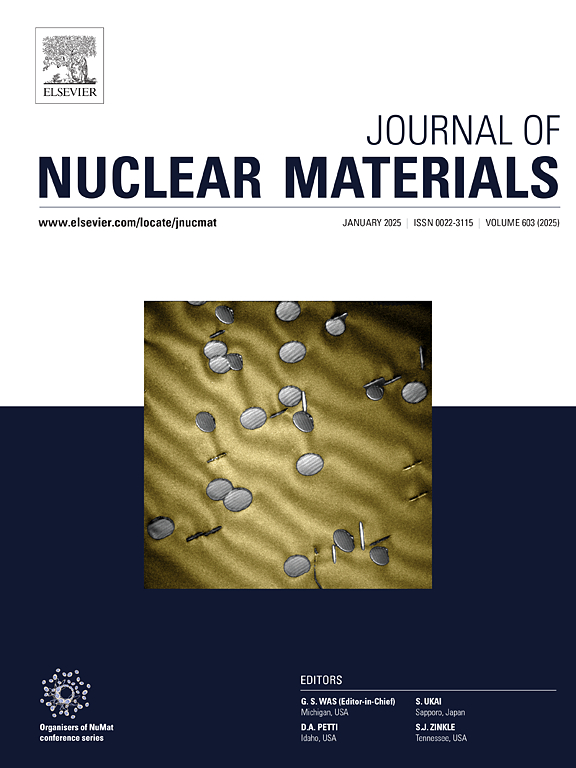Assessment of structural stability and leaching characteristics of phosphate-based geopolymer waste form containing radioactive spent ion exchange resins
IF 2.8
2区 工程技术
Q3 MATERIALS SCIENCE, MULTIDISCIPLINARY
引用次数: 0
Abstract
The use of hydrated waste forms, such as cement, for immobilizing radioactive spent ion-exchange resins (IERs) is unsuitable due to low waste loading, high leaching of radionuclides, and poor durability. Here, simulant spent IERs were immobilized by a phosphate-based geopolymer (P-GP) for the first time. The 7-day compressive strength of the P-GP waste form was inversely proportional to waste loading because the pore size of the P-GP waste form increased with increasing waste loading. The P-GP waste forms with 40 wt% spent IERs satisfied all of South Korea's waste acceptance criteria for compressive strength, thermal cycling, water immersion, and gamma irradiation tests. The leaching behaviors of Co, Cs, and Sr differed from those of alkali-activated materials, but the leaching index exceeded the criterion value of 6.0. The leaching mechanism was governed by the combination of surface wash-off and diffusion or solely diffusion. The P-GP waste form could play as a primary physical barrier against releasing radionuclides. In addition, the geopolymer waste form did not undergo significant structural changes after waste acceptance criteria tests, indicating that it can efficiently immobilize spent IERs. Our findings can contribute new insights into efficient waste form materials for immobilizing radioactive spent IERs.

求助全文
约1分钟内获得全文
求助全文
来源期刊

Journal of Nuclear Materials
工程技术-材料科学:综合
CiteScore
5.70
自引率
25.80%
发文量
601
审稿时长
63 days
期刊介绍:
The Journal of Nuclear Materials publishes high quality papers in materials research for nuclear applications, primarily fission reactors, fusion reactors, and similar environments including radiation areas of charged particle accelerators. Both original research and critical review papers covering experimental, theoretical, and computational aspects of either fundamental or applied nature are welcome.
The breadth of the field is such that a wide range of processes and properties in the field of materials science and engineering is of interest to the readership, spanning atom-scale processes, microstructures, thermodynamics, mechanical properties, physical properties, and corrosion, for example.
Topics covered by JNM
Fission reactor materials, including fuels, cladding, core structures, pressure vessels, coolant interactions with materials, moderator and control components, fission product behavior.
Materials aspects of the entire fuel cycle.
Materials aspects of the actinides and their compounds.
Performance of nuclear waste materials; materials aspects of the immobilization of wastes.
Fusion reactor materials, including first walls, blankets, insulators and magnets.
Neutron and charged particle radiation effects in materials, including defects, transmutations, microstructures, phase changes and macroscopic properties.
Interaction of plasmas, ion beams, electron beams and electromagnetic radiation with materials relevant to nuclear systems.
 求助内容:
求助内容: 应助结果提醒方式:
应助结果提醒方式:


